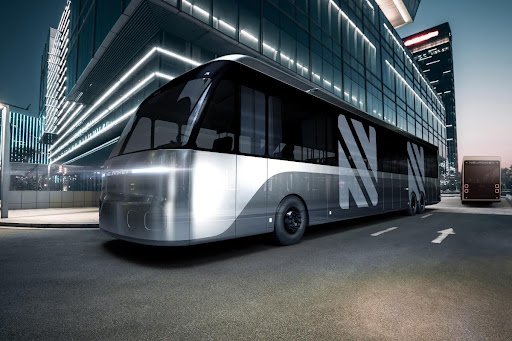Introduction
With the rapid densification of cities, Bus advertising is quickly emerging as an innovative outdoor advertising medium. Brands are cottoning on to the fact that bus ads offer unceasing visibility amid an urban population on the move. And these mobile ads are unlike digital pop-ups; they take the product directly to consumers in their surroundings. The changing cityscape now requires more innovative and aggressive campaigns. During her shift, bus advertising serves as the link between the old and the new.
Why Bus Marketing Thrives in Cities
Bus marketing is particularly effective in urban environments. Bus advertising is efficient because people are exposed throughout the day, wherever they live and work. Passersby see bus ads every day, which means that the brand exposure is regular, and they become familiar with the company. These rolling billboards make their way through residential and business centers. They go beyond having an address and reach over thousands a day. For companies searching for the ultimate mass exposure, city transit with bus advertising cannot be surpassed.
The Modernization of Bus Ads
Technology has turned bus ads into moving, interactive screens that can’t help but catch the eye. Static wraps have given way to LED panels and other animated visuals in some locales, enhancing the aesthetic appeal. Now, bus marketing has gained prominence in the digital age, as campaigns can adjust messaging in real-time. This creates the possibility for brands to run multiple messages in various time slots. This kind of adaptability is one way to keep bus advertising fresh, responsive, and engaging throughout the day.
Data and Smart Targeting in Bus Campaigns
Bus marketing has never been so intelligent or targeted, especially with the increased emphasis on data analytics. Since commutes are tracked as well as the demographics of the audience, the way people travel, advertisers can target even better. The bus ads are now placed in areas where the target demographics are more likely to commute. This data-led, targeted approach will enable brands to target consumers more accurately, resulting in less wastage. When you are smart in targeting, it means your bus advertisement is worth something every time.
The Rise of Dynamic and Real-Time Advertising
It is no longer ads on buses by 2025, it’s opposed to logos it is responding to real-time events. With weather-triggered ads, time-based offers, and event updates, every ride has a relevant content opportunity. Bus promotion systems can now automatically update promotions on multiple routes. Brands can then step in and engage audiences during times of high traffic or local festivities. This snap adjustability is what makes bus ads such a nimble and effective outdoor advertising format.
Creative Storytelling in Motion Advertising
Bus Advertising Done Right: How to Use Visual Storytelling. The tone of campaign messaging is more colorful, the tag lines are more emotional, and the animations are more clever. Bus ads can be a means of creativity (and storytelling) on the move, for they are stories in motion. From shining a light on social issues to messages from our favorite brands, motion increased emotional impact. Bus advertising creates and maintains connections with a captive audience on the move.
Integrating Bus Marketing with Digital Media
Those that do successfully integrate bus advertising with online and mobile marketing for the smartest customer acquisition. QR codes on in-bus ads direct people to websites, discounts, or social media pages. Hashtags and geotagged content helped the protests go beyond the streets. This intermingling of online and offline marketing increases exposure around the clock, providing a continuous presence. It’s a half-and-half kind of strategy in which bus ads dovetail into digital storytelling at just the right moment.
Sustainability and Eco-Friendly Bus Advertising
Environmental responsibility is writing the next chapter for bus advertising. I am sorry, no typo here: Many cities now want to see recycling materials and eco-safe printing for bus ads. Electric and hybrid buses also make outdoor advertising even less carbon-intensive. For brands, being associated with eco-friendly and green-leaning ads is a plus. Bus advertising is both profitable and moral, as it is environmentally friendly.
Measuring the Success of Bus Ad Campaigns
Measuring impact is everything in modern advertising, and bus ads are no exception. Useful data is gathered through digital tracking, audience analytics, and post-campaign surveys. Bus marketing channels now provide insights on impressions, engagement, and recall rates. The clarity allows advertisers to measure ROI with ease. Bus ads are demonstrating their worth in this tough, competitive marketing arena with metrics you can rely on.
Conclusion
The next gen of bus advertising is being ready for the future with flexibility and smart integration. From data-driven to storytelling, bus ads are ever-changing. They offer reach, repetition, and a visual splat that few other media can rival. As urbanites lead busier lives, buses will be the most stellar moving canvases for brand storytelling. Bus marketing will continue to steer visibility, trust, and innovative thinking through our city streets.
FAQs
What is bus marketing?
Bus advertising is a method of outdoor advertising. Bus advertisements are placed on buses, at bus stops, and in shelters to promote brands, products, or services.
How much is the bus advert?
Bus advertising rates fluctuate by city, ad size, and length, but are generally more affordable than other OOH formats such as billboards.
Why are bus ads advantageous?
Outdoor Bus Advertising provides wide exposure to a larger audience and increases name recognition in the community.
Is bus advertising available for small businesses?
Absolutely! Bus advertising offers a range of packages that suit any business’s needs, whether local or national.







